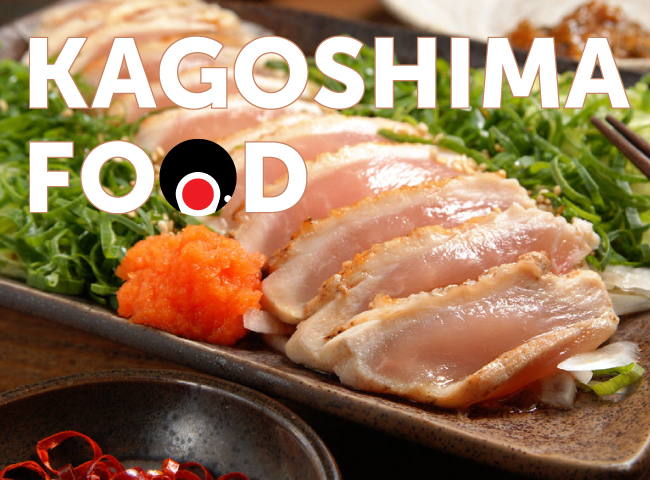Japanese Sansai: 9 Spring Mountain Vegetables from Japan

From early March, nature awakes in Japan to the budding of plum and sakura trees, and their full blossoms herald the arrival of spring. This season also brings forth a number of Japanese vegetables from the mountains of Japan. Known as sansai, these wild edible plants can be boiled, fried, eaten raw and more! Let’s take a look at 9 essential sansai that help make Japanese spring cuisine as wonderful as the weather!
9 Sansai Vegetables from the Mountains of Japan
Fuki (Butterbur Stalks)
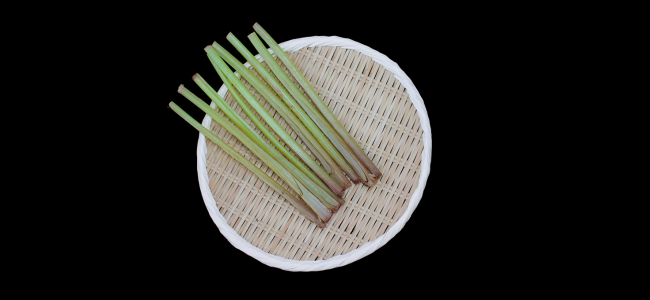
The long stalks of the fuki (butterbur) plant are edible and have a succulent texture comparable to celery. Fuki is naturally bitter, so the stalks are prepped by rolling them with salt and then boiling them to reduce the sharp taste. They are delicious deep-fried in tempura, or can be enjoyed simply by cutting the pre-blanched stalks into bite-size pieces and then simmering them in dashi and mirin or with soy sauce, sake and sugar.
Fuki no to (Butterbur Buds)
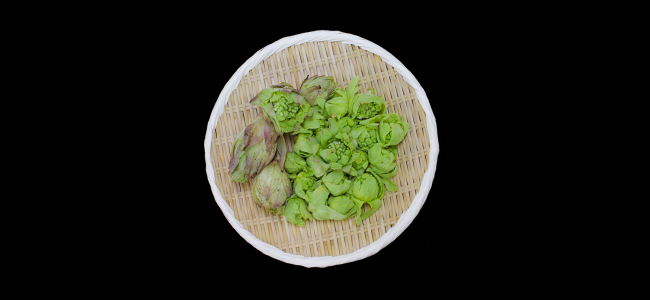
Like fuki stalks, the buds of the Japanese butterbur plant, called fuki no to, are edible. They are also highly nutritious, packed with vitamins, calcium and fiber. In the early spring, they appear from under the snow and have closed buds with a faint yellow-green or ivory-green color. Fuki no to have a natural aromatic bitterness that can be tempered by cooking them in oil. It’s popular to eat these spring buds fried in tempura or sautéed and mixed with miso.
Kogomi (Ostrich Fern)

Kogomi is a wild plant native to Japan and is easily recognizable by the spiral of the curled fern tips. This spring vegetable must be boiled and dried before eating to remove bitterness. Try kogomi simmered in soy sauce and dashi as a mild-flavored side dish.
Nanohana (Flowering Rapeseed)
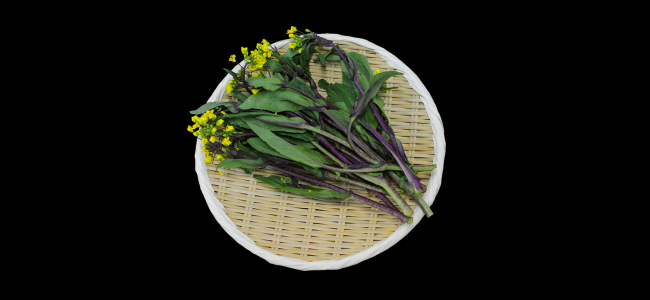
In the spring, flowering nanohana is gathered from mountains and open fields. Its tender flower buds, stalks, and leaves are all edible and have a slightly bittersweet flavor that’s close to broccoli. In fact, it can be prepared and enjoyed much like broccoli—boiled, steamed, stir-fried, etc. Unlike other sansai vegetables, nanohana doesn’t have a sharp or bitter taste, so it can be enjoyed without parboiling.
Shungiku (Spring Chrysanthemum)
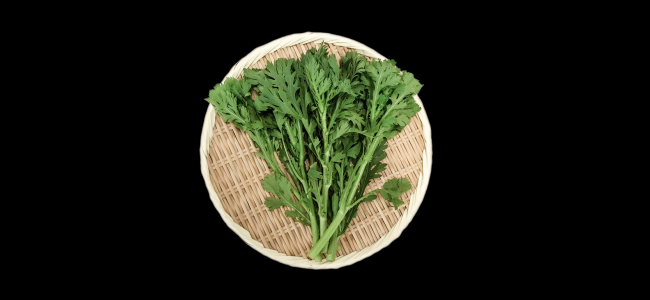
Shungiku, or spring chrysanthemum, are popular Japanese greens. Their pungent taste adds balance to other rich flavors. In the spring, young shungiku leaves can be added to soups and stir-fries, while more mature shungiku greens are often added as an ingredient in hot pot dishes like nabe and sukiyaki. Make sure to wait until the last moment possible before adding them to a soup or hot pot in order to preserve the green’s fragile leaf structure.
Takenoko (Bamboo Shoots)
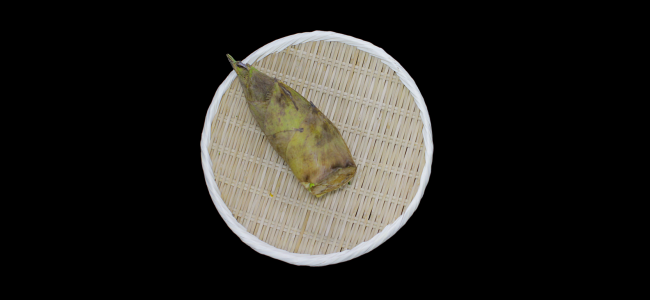
Takenoko are the baby bamboo shoots that have just appeared out of the ground. Crunchy and juicy, these sansai vegetables are considered a delicacy in the spring, especially since there’s a short window where they can be dug up and eaten fresh. The rest of the year, you can only find takenoko pre-cooked or canned. Simmer fresh takenoko with a bit of nuka rice bran and then slice them up to eat on salads, batter and fry them for tempura, or cook with soy sauce, sake, and sugar for a nimono dish.
Tara no me (Angelica)

Sometimes referred to as the “king” of sansai vegetables, tara no me are the fresh shoots of the Angelica tree plant. In the spring, tender young shoots are picked from the end of tree branches. Highly bitter in their raw state, tara no me must be boiled in water or soaked and cooked before eating to remove any astringency. They are not only delicious but also highly nutritious, and are typically eaten battered and fried in tempura.
Wasabina (Wasabi Mustard Greens)
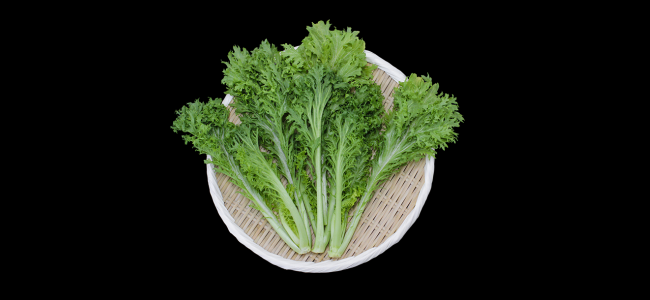
Named after the wasabi root for its spicy flavor, wasabina is a delicious mustard green that’s highly versatile among spring Japanese vegetables; it can be eaten raw, stir-fried, or added to soup. The leaves of fresh, young wasabina have a delicate texture that go well in blends of leafy salad greens, while mature wasabina has curlier leaves and a bolder flavor that tastes better when cooked.
Yama Udo (Mountain Asparagus)
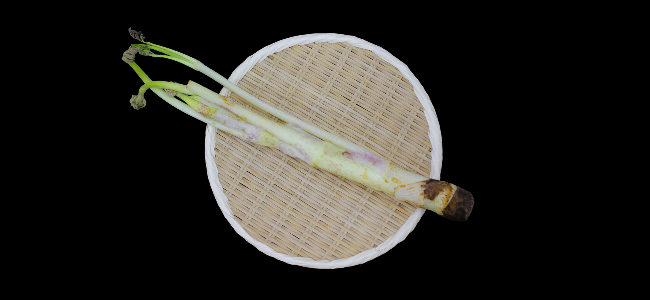
Yama udo is a type of mountain asparagus with edible shoots and leaves. Peel away the tough green outer layer to reveal a tender and crisp white flesh that’s reminiscent of celery, fennel, and even lemon. It’s best to soak fresh yama udo with a splash of vinegar or lemon juice for about 30 minutes before cooking to remove any bitterness. The shoots can be grilled, sautéed or pickled, while the leaves can be added to soups and salads or battered and fried for tempura.
Enjoying Spring Japanese Vegetables
No matter the season, no matter the region, vegetables play a central role in traditional Japanese cuisine. If you happen to travel in Japan during spring’s annual rebirth, we hope you will explore not only the many panoramic vistas of sakura on full display, but the variety of ever-changing regional cuisine featuring these nine seasonal mountain vegetables. There is truly no better way to explore Japanese spring cuisine than with sansai.








